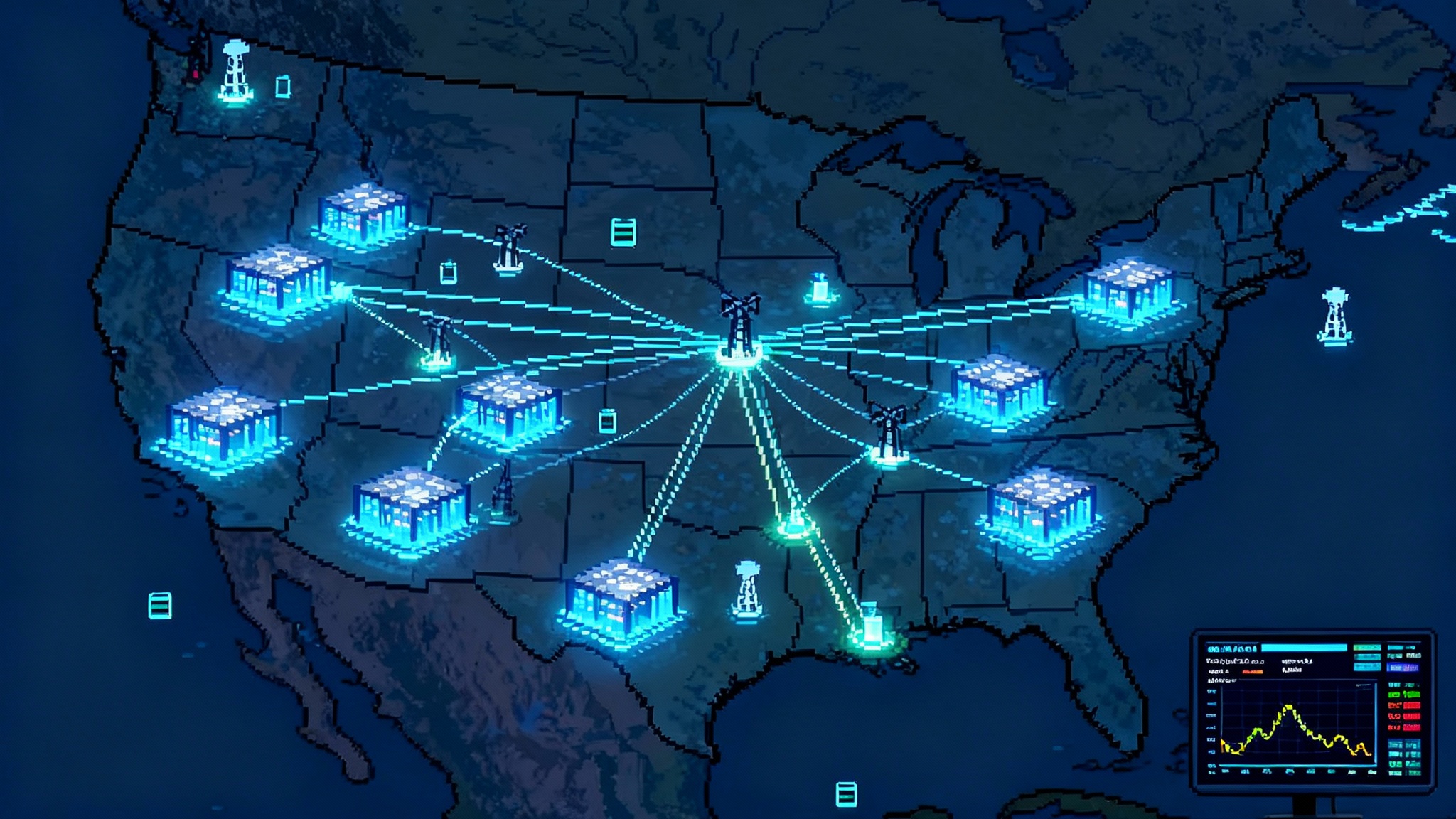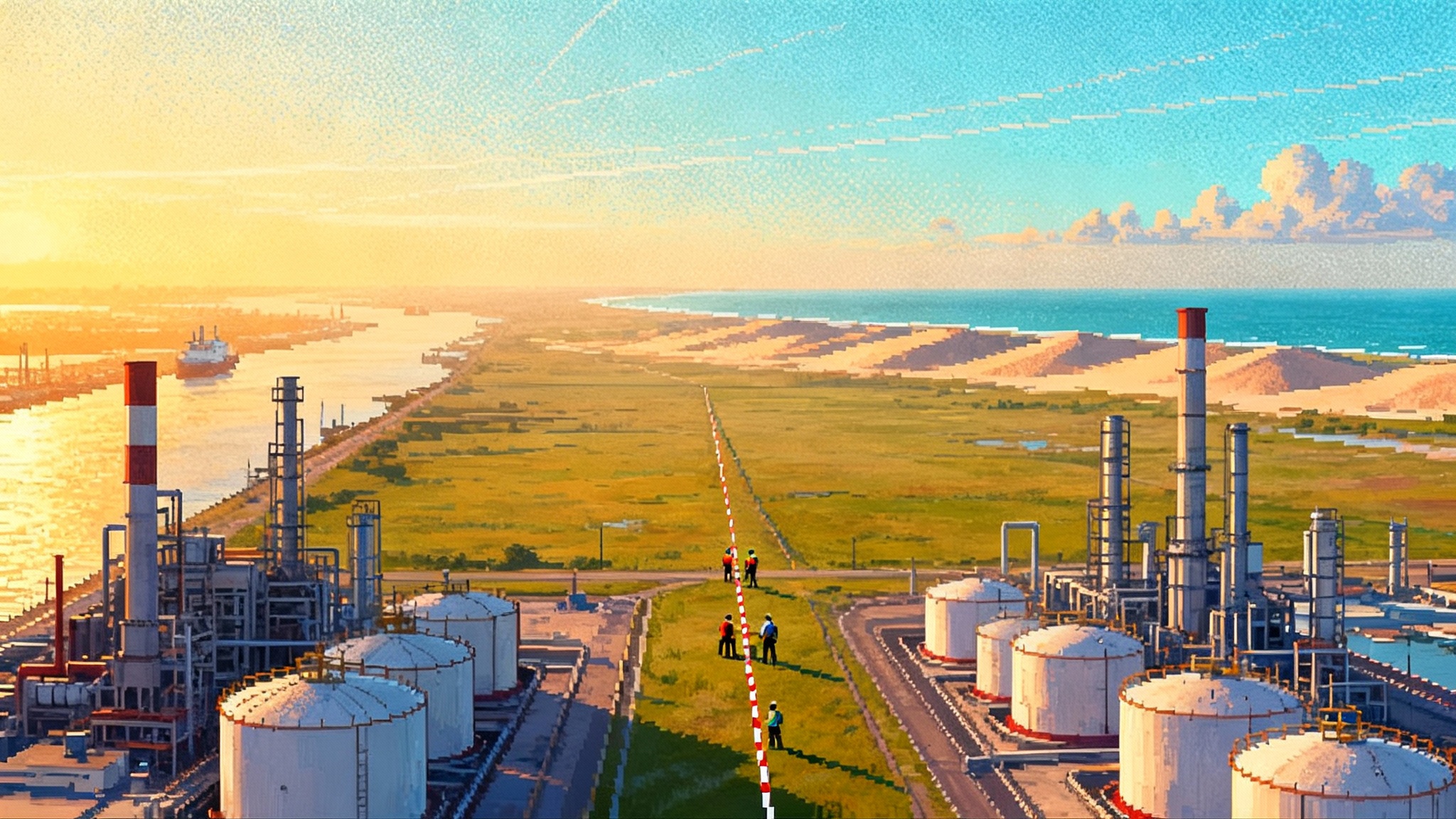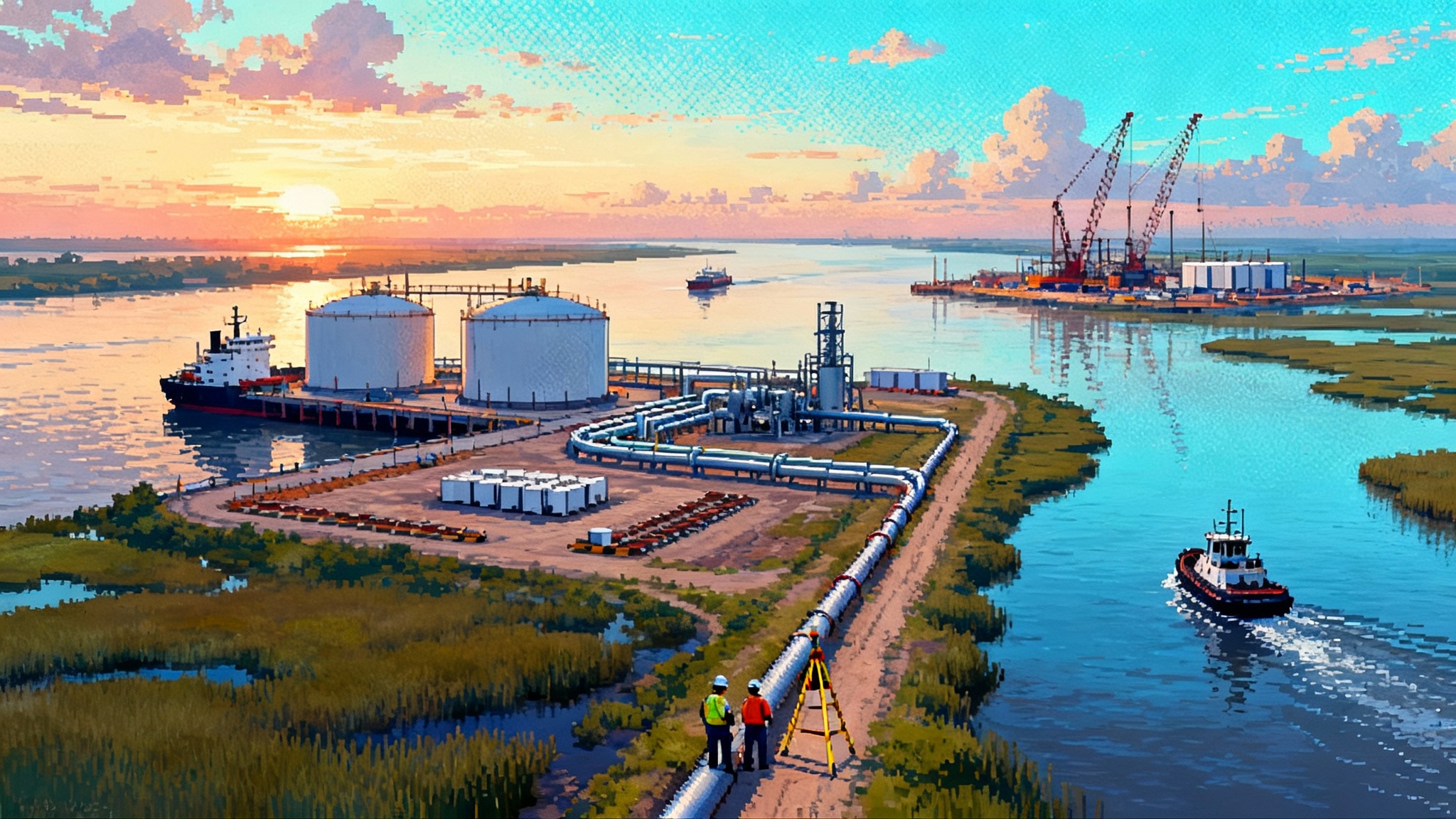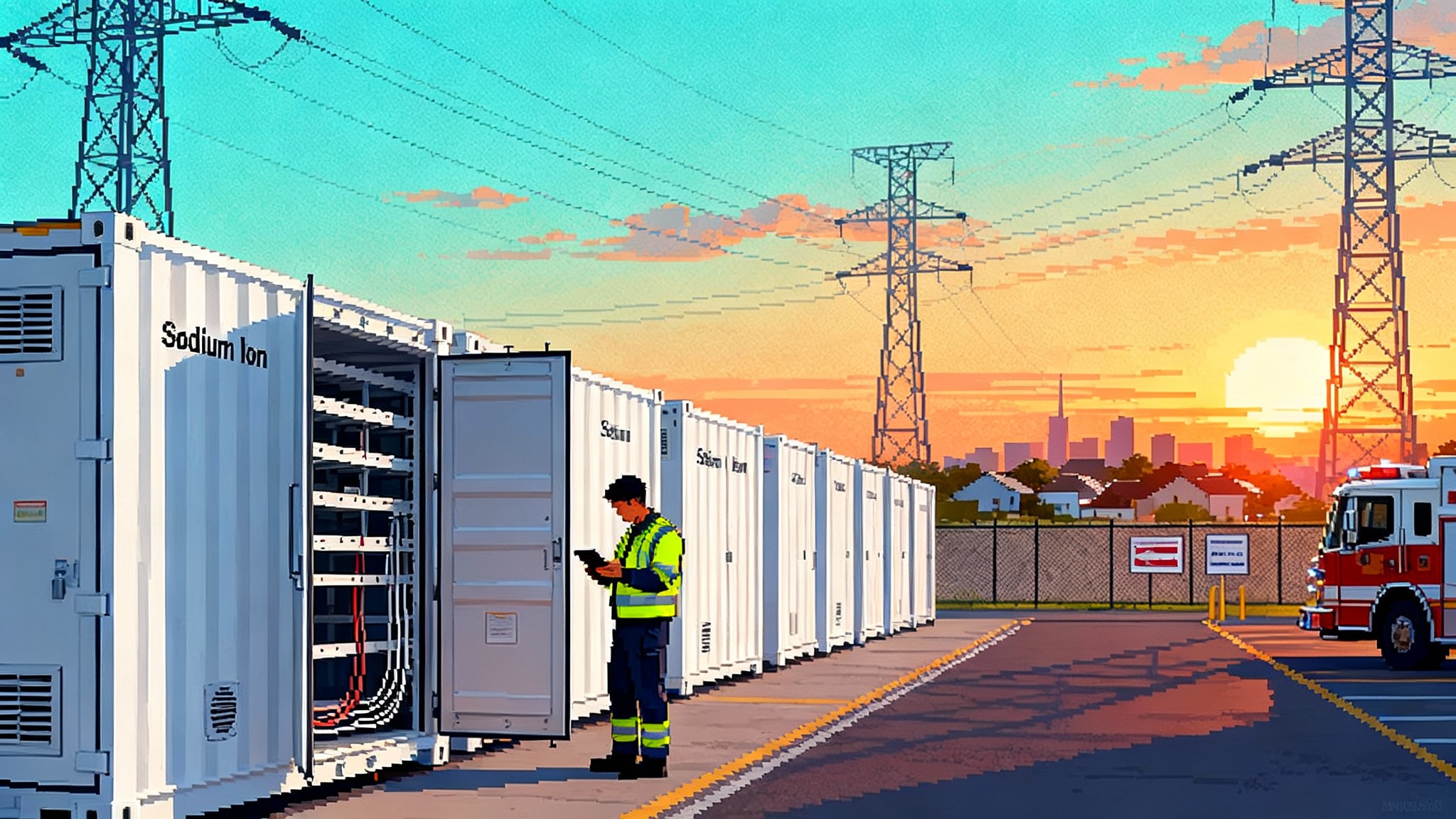Interconnection 2025: Order 2023’s First Results, Powered by AI
MISO and SPP compliance approvals, PJM's first transition studies, and early PJM-Google automation signal a real thaw in the U.S. interconnection queue. Here is how fast-track windows, queue caps, and AI can pull viable projects to 2026 energization.
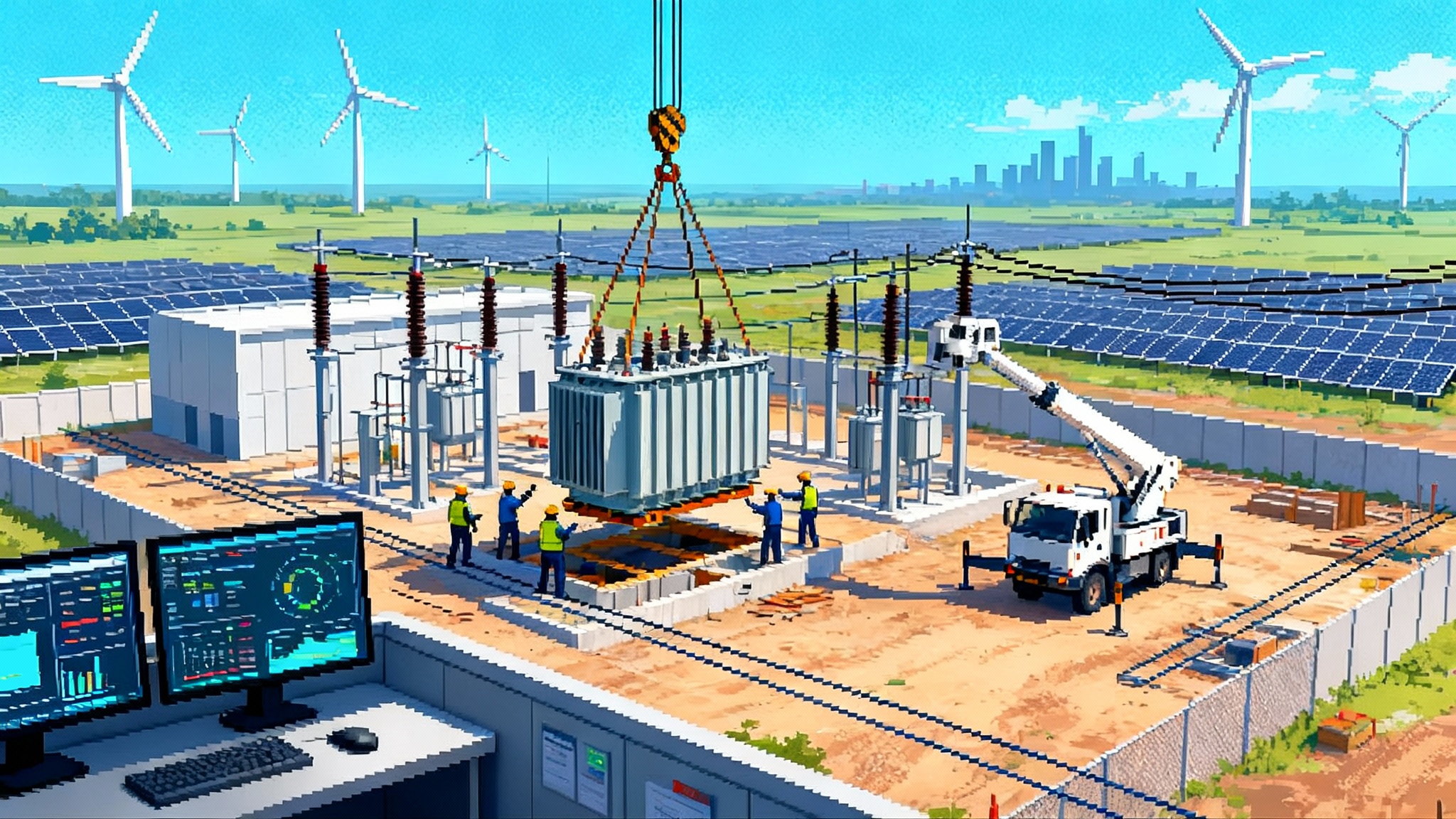
The backlog finally starts to move
For years, developers joked that the fastest way to interconnect was to buy an existing project because new ones could not get through the queue. That line is getting stale. In 2025, we started to see the first tangible results of the Federal Energy Regulatory Commission's Order No. 2023, the rule that rewired how the United States evaluates grid interconnection requests. The pace is not yet comfortable, but the direction has changed. The pipe is still narrow; water is flowing again.
Three signals anchor this shift. First, the Federal Energy Regulatory Commission largely accepted the Midcontinent Independent System Operator and the Southwest Power Pool compliance proposals that translate Order No. 2023 into regional rules. That decision sets the practical terms for how clusters, deposits, milestones, and penalties will govern developer behavior in two of the country's most active footprints, and it gives utilities firmer ground for scheduling studies and upgrades. The industry read it as a green light to proceed within a new set of guardrails, not a flashing yellow. FERC largely accepts MISO and SPP reforms summarizes the acceptance and the remaining to-dos.
Second, PJM Interconnection, the country's largest regional transmission organization, completed the heavy lift of its first transition cycle studies under its retooled process. The point is not that every project cleared; the point is that projects moved decisively forward or stepped aside, which is what a functioning queue must do. The backlog is no longer an undifferentiated block of pending work; it is a sorted set with a path.
Third, PJM and Google began deploying artificial intelligence to automate the most repetitive, error-prone parts of interconnection studies. Think of it as a whisperer for large grid models. Instead of humans transcribing and checking one-line diagrams, mapping loads, and refactoring contingencies by hand, trained models accelerate the clerical steps while engineers focus on judgment calls. This is not magic; it is workflow plumbing. But plumbing at scale changes outcomes. For broader context, see how AI's power land rush reshapes grid plans.
What changed in 2025, in plain English
Order No. 2023 made three big bets, now visible in 2025 practice:
- Cluster studies, not first-come-first-served. Projects enter in timed windows and are studied together. This shrinks redundant work and aligns upgrades with groups of projects that actually want to build.
- Readiness requirements with teeth. Developers must show site control, post more meaningful security, and hit milestones on time. Withdrawals carry consequences that discourage speculative placeholders.
- Firm study timelines and affected-system discipline. Transmission providers must keep clocks and coordinate with neighbors so that a project is not stuck in limbo because the next grid over did not run its analysis.
MISO and SPP codified those bets with specifics that matter on the ground. Queue caps throttle how many megawatts can enter each window so study teams are not overwhelmed. Fast-track windows allow simpler projects that meet clear criteria to move on an accelerated path. Readiness tiers let projects that have real land, real offtake prospects, and real equipment deposits jump closer to the front. Each element changes incentives. Together they change behavior.
PJM's transition studies show the second-order effect: throughput. When rules make it harder to camp in the queue and easier to graduate if you are ready, portfolios become more realistic. The result is not all roses. Some developers are learning that traditional timelines from power purchase agreement signature to commercial operation date are no longer safe. But the shift from indeterminate to determinate is a win, because teams can now plan around credible clocks.
Fast-track windows and queue caps are like metered on-ramps
A good highway does not let every car merge at once. It meters entry and clears accidents quickly. Fast-track windows and queue caps do the same for interconnection. They are not about keeping people out. They are about keeping flow.
- Fast-track windows. If your project fits a known, lower-risk shape, you can use a shorter lane. Typical examples include modest inverter-based resources connecting to distribution or sub-transmission where hosting capacity is well understood, or uprates at existing sites with minimal protection changes. The rule of thumb is simple. The less you perturb the network, the faster you can be studied. For related capacity tactics, see how AAR and DLR can free capacity.
- Queue caps. When too many cars try to enter, everyone slows down. Caps set a ceiling on how many megawatts can enter a study cycle, with overflow queued for the next window. This keeps engineering teams sized for quality, not perpetual firefighting. Caps are not perfect. They create the risk of miss-the-window delays. But they create a predictable cadence that procurement and financing can actually use.
A concrete example: a developer with three 150 megawatt solar and storage hybrids in one county splits them across two windows rather than shoving all 450 megawatts into one cluster. Why? Because under caps and readiness tiers, one fully baked project in the next window can beat three half-baked ones in this window. The right strategy is no longer volume; it is fit and finish.
AI changes the study math
Before 2025, much of an interconnection study was craft work. Engineers parsed customer models, hand-converted data formats, patched missing parameters, and built contingency sets project by project. That bespoke work absorbed the same scarce experts needed for real engineering judgment. With PJM and Google deploying automation, the division of labor is shifting.
- Data ingestion. Models arrive in many shapes. Automation standardizes and validates inputs against templates, flags missing inverter settings, and cross-checks ratings and topology references.
- Contingency housekeeping. Building and curating credible contingency lists takes time. Machine-assisted tools update lists and prune duplicates faster, which removes noise before short-circuit and stability runs.
- Scenario choreography. Running hundreds of cases to test deliverability across seasonal and hourly patterns is repetitive. Automation launches and tracks batches, while engineers focus on interpreting what the results mean and which upgrade options actually fix the problem.
The result is not that studies finish overnight. The result is that throughput becomes more predictable and less sensitive to staff turnover or vendor backlogs. That predictability is gold for project finance.
The 2026 developer playbook: how to actually reach energization
Treat 2025 as your practice season. In 2026, you want to be the project that sails through while others trip on the new rules. Here is the playbook that teams are using to do that.
- Enter the right window, not the first available one
- Check the upcoming cluster calendars and caps. If the current window is tight, wait for the next and use the time to finish site control and permits. A fully documented application in a less crowded window usually beats a rushed submittal in a jammed one.
- Prove readiness beyond the minimum
- Prepare site control evidence that goes beyond option agreements. Provide recorded leases or ownership documents where possible. Include a milestone plan with dated deliverables and responsible parties, not a generic schedule graphic.
- Choose your service level with intent
- Energy-only service can be faster but limits revenue. Network resource interconnection service can unlock capacity value but adds deliverability constraints and upgrades. Model both cases and write down the commercial triggers that would make you switch. Hand that memo to your interconnection manager now so the decision is not improvised under deadline later.
- Bring a standard modeling package
- Deliver an inverter and plant controller package that includes validated short-circuit, power flow, and dynamics models plus commissioning settings. Run your own sanity checks against public base cases if available. The fewer model issues the utility has to chase, the faster you clear.
- Pre-wire your upgrade consortium
- Many upgrades are shared. Identify the likely co-beneficiaries for your pocket of the network and open the conversation on cost allocation early. Draft a template memorandum of understanding and term sheet so that when results drop, you are trading redlines the same week.
- Lock long-lead equipment before your final study
- Large power transformers, series reactors, breakers, and protection relays still face supply chain variability. Get refundable or transfer-friendly slots with vendors tied to your study timeline. If you wait until after the facilities study to begin, you can add a year to energization.
- Propose phased energization and temporary configurations
- Ask whether a phased approach can get a subset online while upgrades build. Examples include energizing with a reduced inverter count, using temporary line reconfigurations, or adding a small battery to manage ramp rates until a reconductor is complete. Utilities are more open to these ideas in 2025 because the rules now reward throughput.
- Engineer for affected-system coordination
- If your project sits near a seam between regions or utilities, include model artifacts tailored for the neighboring system's tools. Offer to fund joint model runs. A week saved in affected-system back-and-forth is often more valuable than a month saved anywhere else.
- Schedule outages like you schedule financing
- Work with the utility to put tentative outage holds on the calendar early, then check them monthly. Many projects reach mechanical completion and then sit idle waiting for an outage. Treat outage windows as a critical path item with executive visibility.
- Align your commercial clock with the study clock
- Build contract flexibility around study timing. Use commercial operation date ranges and optional step-up provisions in offtake contracts. Add study-driven extension clauses with clear triggers. Your buyer wants energy; they do not want excuses. Show them how your deal flexes when the grid asks for more time. For demand-side complements that can de-risk deliverability, see FERC 2222's demand-side capacity race.
The 2026 utility playbook: how to turn throughput into megawatt-hours
Utilities can use the same rule changes to create more reliable schedules and fewer escalations. Here is what leading teams are doing.
- Publish hosting capacity and standard designs
- Share feeder and substation hosting capacity maps where possible. Offer standard interconnection templates with one-line diagrams and settings ranges. Developers will self-select into the right lanes when they can see the road.
- Pre-approve equipment lists
- Issue preferred equipment lists for transformers, breakers, relays, and plant controllers that align with protection philosophies. If you know what will pass your internal review, developers will spec it early and reduce redesign cycles.
- Bundle upgrades and buy down bottlenecks
- When a cluster points to the same tie-line or transformer bank, propose bundled upgrades with clear cost shares. Consider utility-funded buy-downs for high-value bottlenecks that unlock multiple projects at once. One well-chosen reconductor can avoid five bespoke fixes.
- Move engineering work to the left
- Start preliminary design on high-probability upgrades before final agreements are signed. Use conditional notices to proceed tied to financial security so you are not sitting idle between study results and mobilization.
- Make outage calendars public far earlier
- Publish indicative outage calendars a year ahead. Work with regional operators to reserve large cutover windows in shoulder seasons. This helps developers line up crews and helps you avoid last-minute firefights.
- Stand up an affected-system fast lane
- Maintain a dedicated coordination team for neighboring-system cases and empower them to trade study artifacts without weeks of legal delay. Measure them on days to first response and days to closure.
- Put AI on the dull parts and audit the rest
- Use automation for data validation, contingency curation, and case management. Pair that with a clear audit trail and periodic model spot checks. The point is not to replace engineers. It is to give them breathing room for the judgments only humans can make.
- Report throughput like a business metric
- Publish monthly dashboards that track studies started, studies completed, average days per phase, and upgrades commissioned. When everyone can see the flow, behavior improves throughout the ecosystem.
What remains hard
- Protection engineering at legacy stations. Some interconnections still hinge on custom protection schemes at stations with obsolete drawings and tight footprints. These are not good candidates for fast-track treatment. Plan extra time and consider relocating the point of interconnection if land and permitting allow.
- Large transformer and steel lead times. Global supply remains uneven. Utility framework agreements can help, but developers should still plan for a buffer between equipment delivery and outage windows. Take credit for early procurement in your readiness showings.
- Environmental and community process. Even with better studies, permits can stall projects. Early community engagement and site design that avoid sensitive areas are not optional. Utilities can help by signaling preferred corridors for reconductors or new lines.
- Affected-system gray areas. Some seams between regions still lack crisp escalation paths. Flag these early. If you wait for the formal letter, you have already lost a month.
What to watch in 2026
- The slope of study completions. If monthly completions rise and stay up, the throughput flywheel has engaged. If they spike and fall, staffing or tooling needs another round.
- Adoption of standard plant controller settings. Convergence on standard settings for inverter-based resources will shave weeks off model validation. Watch whether regions publish more specific templates.
- Use of provisional or phased interconnection agreements. If more projects take provisional service while upgrades proceed, it means everyone is getting more comfortable managing interim risk.
- Measurable benefits from AI. Look for study phases with fewer back-and-forth rounds and fewer model deficiency letters. That is the cleanest signal that automation is paying off.
A closing thought, without the spin
Interconnection reform was never going to be a single switch. It is a relay with many contacts that must close in sequence. In 2025 we saw the first contacts close. Federal Energy Regulatory Commission approvals gave the regional rules weight. PJM's transition studies turned that weight into motion. PJM and Google's automation began to reduce the friction that wore people down. The game now is consistency.
For developers, the 2026 advantage will go to the teams that treat interconnection like a product launch with stage gates, not like a permit you file and forget. For utilities, it will go to those that publish more, standardize more, and automate the parts that should never have required human heroics. Everyone wants electrons on the wire. The policies are finally pointing that way. The winners will be the ones who work the new playbook before their competitors even print it.
